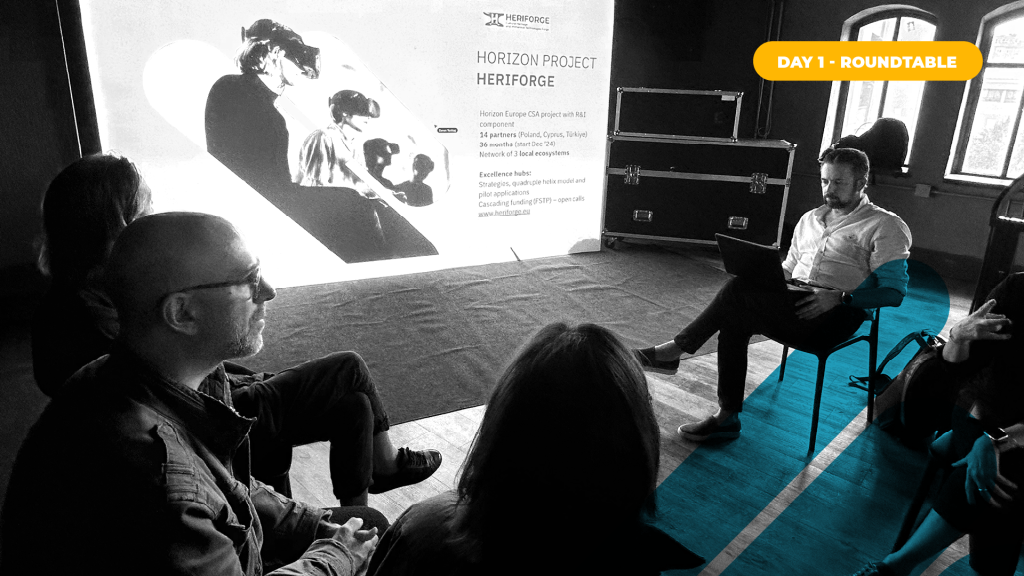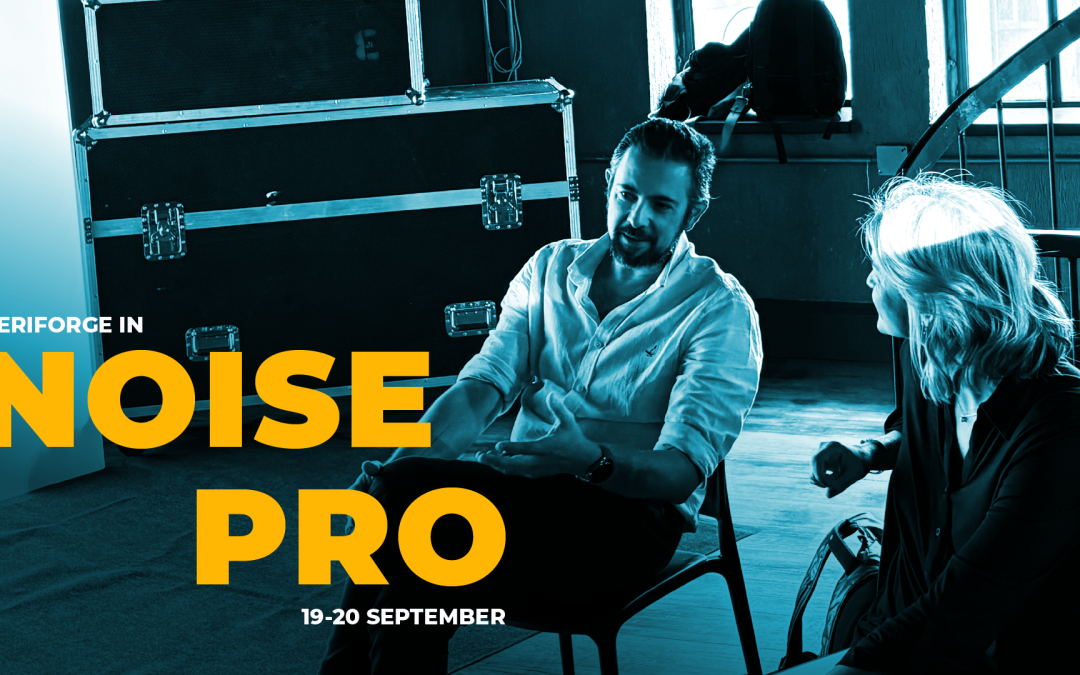ISTANBUL – Three days after the Noise_Pro gathering at Bomontiada (Sept. 19), artists, curators, and technologists are still digesting a forthright roundtable, part of the HERIFORGE First Open Call, that pressed on how extended reality should be used in cultural heritage and the arts, and who gets to steward the resulting data and stories.
Speakers & moderators
The roundtable featured Pablo Del Bosco (FLUMI, MUTEK), Olga Vad (ITMO University), and Peter Freudling (Ars Electronica). The discussion was moderated by the co-directors of KARMA XR Lab, Ivon Bensason and Assoc. Prof. Asim Evren Yantac.

Key takeaways:
XR beyond the headset
Participants emphasized that the most impactful audience experiences lean on multimodal, shared environments—projection mapping, room-scale “cave” spaces, LED and mixed setups—rather than isolating single-user headsets. Tactile and haptic elements were highlighted as ways to deepen agency and presence. Still, scale remains a brake: co-present pieces require careful throughput planning, staffing, and robust hardware.
Who owns the digitized past?
Debate centered on rights and responsibilities around digital twins of heritage sites: open access versus control, acceptable levels of creative speculation in reconstructions, and how to prove provenance if a physical site changes or disappears. Governance, documentation pipelines, and integrity checks were identified as urgent needs.
Art, science, and the market
The same XR work can be framed as art, research, or even psychology depending on venue and audience, which in turn shapes funding and evaluation. Case studies showed how archives, AI restoration, and speculative storytelling can ethically coexist when processes and roles are transparent.
Why curation models matter
Centralized labs and archives – paired with open calls like HERIFORGE – can standardize access, crediting, and reuse of datasets while leaving room for artistic exploration.
The bottom line
Noise_Pro’s message was clear: XR’s future in culture isn’t a hardware race. It’s a design, ethics, and governance challenge—crafting shared, multimodal experiences; building credible pipelines for data and rights; and coordinating artists, technologists, and institutions under clear frameworks so the public can actually experience the work at scale.
Industry-only briefing: Sept. 20
On September 20, an adjacent closed-door session welcomed industry professionals for deeper exchanges on collaboration models and pipeline readiness. During this session, Ivon Bensason delivered a focused presentation on the HERIFORGE Project, outlining its objectives, upcoming opportunities, and pathways for institutional partners to engage.

